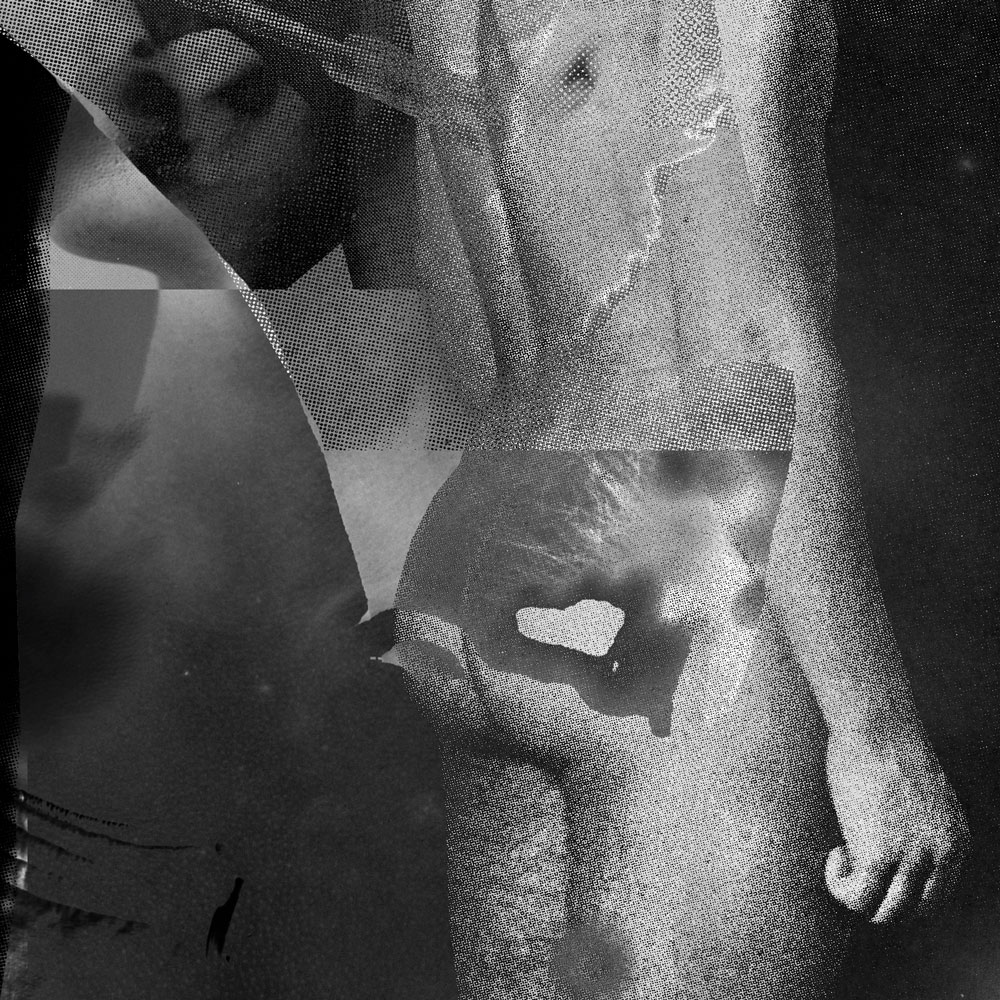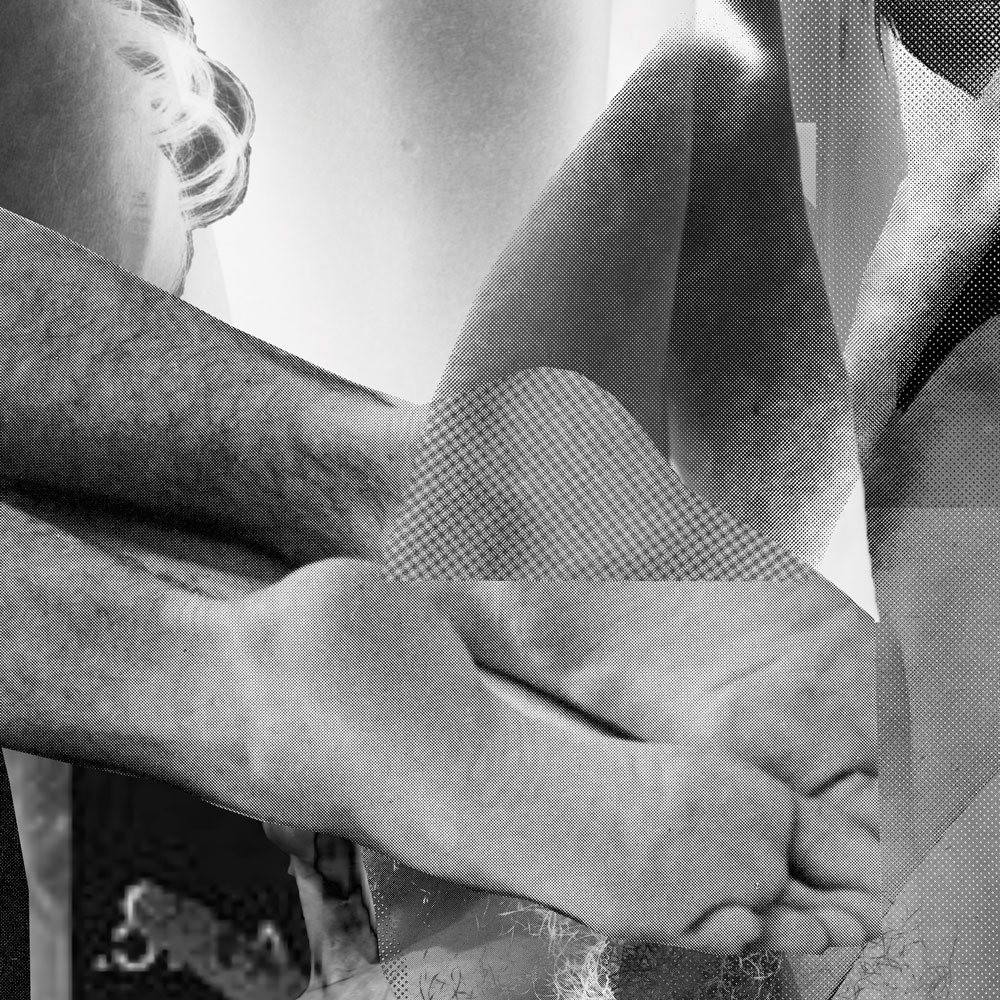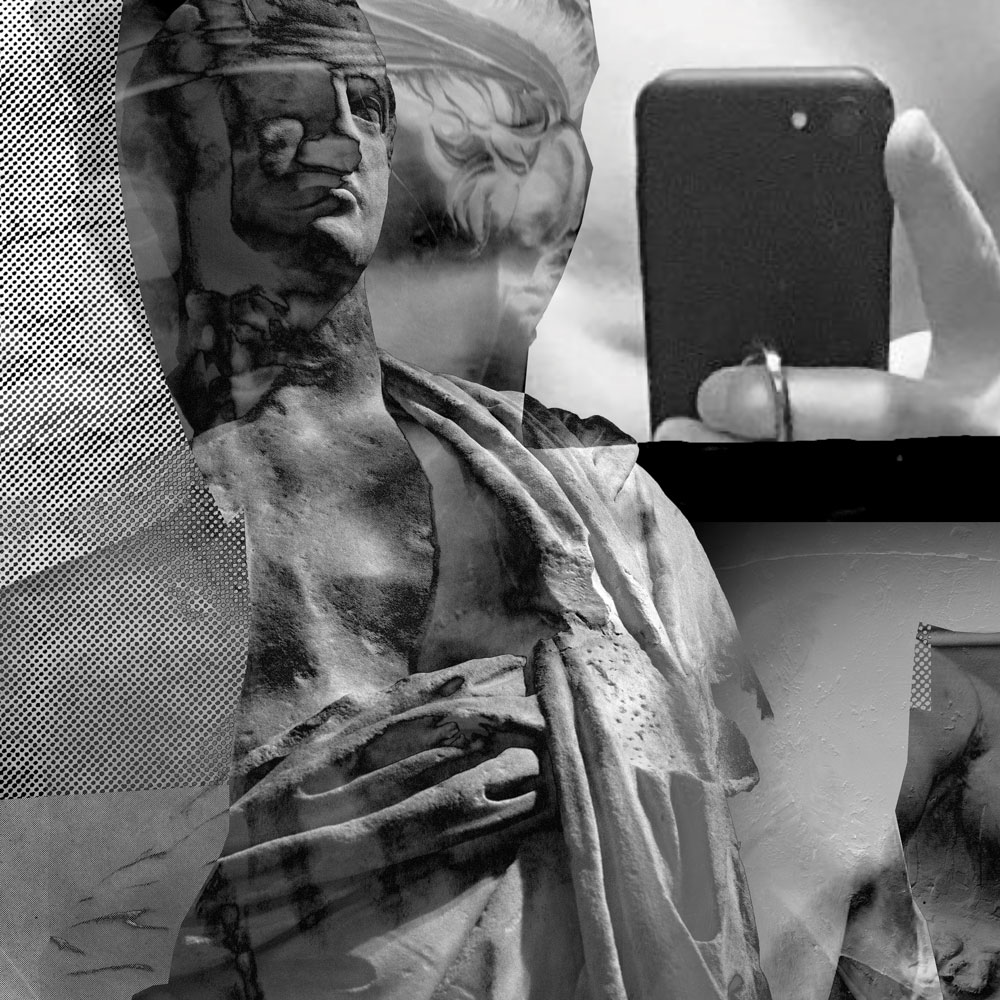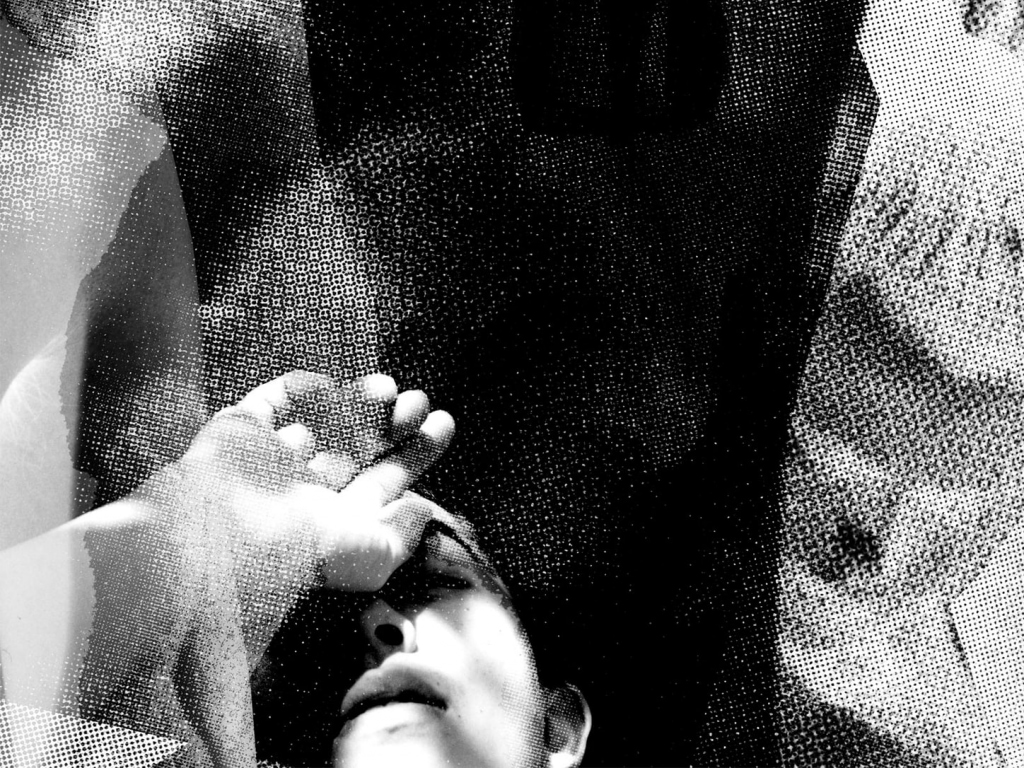In a world where every minute millions of selfies are snapped, filtered, rendered and uploaded, how do we interpret the images of the self that we create and consume in a mix of technology and reality? Where does the body, the self – or even the skin – begin and end?
Mayumi Hosokura’s latest publication, New Skin, introduces viewers to a series of complex, layered images taken from a larger digital collage. Fragmented statues, male physique pinups, thirst trap selfies and outstretched hands clutching iPhones are woven together in monochromatic collages. Combining photographs, textures and ephemera, the work is heavily inspired by feminist theory, seeking to explore the gaze through which we consider identity, the body and desire.

NEW SKIN (2020) by Mayumi Hosokura published by MACK
Rejecting Boundaries
New Skin includes two text extracts from essays by American feminist theorist and scholar Donna J Haraway. In 1985 Haraway wrote a controversial essay for the Socialist Review, entitled “A Cyborg Manifesto.” The essay rejected many of the divisive binaries and boundaries of society and instead called for a reconstruction of identity, blurring the lines between human, animal and machine; the physical and non-physical.
Amongst her foreshadowing theories, Haraway noted the prevalence of modern machines and technology integrating into our lives, which she believes should be embraced by us as hybrid forms, thus cementing her writing as a fundamental text for posthumanist feminist theory. Haraway is also known for her 1988 essay, “Situated Knowledges,” which includes statements such as: “Subjectivity is multidimensional; so, therefore, is vision.”
“Subjectivity is multidimensional; so, therefore, is vision”
Hosokura was introduced to Haraway’s writing by a curator friend who suggested it might be of interest, considering the photographer’s ongoing themes of gender, sexuality and the dichotomy of living and non-living things. Despite the essays being written three decades earlier, Hosokura found a fresh resonance in the pioneering feminist’s words.
“Haraway’s ideas really affected me. All her work is very important for me but especially ‘Situated Knowledges’ had a big impact on New Skin,” she says. “Not to have one vision from above, we can have a more complicated vision where we are now … we can stitch our vision.”
Challenging Identity
Haraway is frequently engaged with the subject of gender and identity. In opposition to many other feminists theorists, “A Cyborg Manifesto” challenged the classification of gender, arguing that along with race and class, these are identities that are forced upon us.
She proposed that a cyborg, less concerned with a physical organic self, might also have a more fluid approach to sex and sexual embodiment. In “Situated Knowledges,” she dismantled objectivity and criticized the impossible notion of a transcendental way of seeing, arguing in favor of the validity of partial perspective with no single standpoint.
These ideas, particularly when applied to the production and consumption of visual art, bodies and desire, open up new and unrestricted ways of seeing, regardless of our prescribed or self-chosen identity.

NEW SKIN (2020) by Mayumi Hosokura published by MACK
Gender and Nonconformity
In parallel, Hosokura’s work has continuously explored gender and nonconformity in her own way, often featuring androgynous portrait subjects, capturing naked forms that convey a deep sensuality and beauty that is mostly devoid of focus on typical gender signifiers.
Her past photographs, publications and exhibitions have often presented pairings and compositions of humans alongside natural forms such as plants, minerals, crystals and so on. These sometimes abstract and indirect suggestions of a symbiotic relationship offer a refreshing subjective vision for both the artist and viewer.
It’s undeniable that female artists are still a minority in the contemporary art world. Furthermore, in Japan, where gender inequality largely prevails, it is especially powerful and insightful to see a female artist focusing on “non-female” subject matter, with an almost ungendered approach.
“I can say my identity connects to my work in a bit of a twisted way”
“Usually, my identity as a female artist does not always connect to my work, but in this series I use only male figures; that fact relates to my gender a bit,” says Hosokura. “I use nudes of both males and females in my past work, but [for this series] I was really influenced by male figures captured by male photographers and movie directors, like Jack Pierson, Wolfgang Tillmans, Gus Van Sant … Of course, I am a woman, but I learned a lot about how to see male figures with joy. It’s a little complicated … I can say my identity connects to my work in a bit of a twisted way.
“In the New Skin series, I wanted to mix different gazes on male figures, not only my own.” She explains, “I used my male portrait works, pictures of male sculptures in the museum, cutouts from gay magazine and selfies of Korean men on the internet… all different gazes or desires … the gaze that comes from me (woman) to man, from man to man, from men themselves to their body… also we can see the male body in the social context of the museum.”
Uninhibited Sensuality
Although the appreciation of the male form has always existed in arts, sports and culture, much of the modern world still blushes at any celebration or eroticism of male nudity, in contrast to the everyday commodification of female bodies that pervades our media, our lives and even our art galleries. In New Skin, presented with vague and ambiguous body parts: hands, feet, buttocks, lips and the creases of skin, we are given freedom to experience uninhibited sensuality and sexuality through our own vision.
“I need something that confuses our boundaries”
Seemingly clashing and contrasting elements are all stitched together in the artist’s latest work. While Hosokura’s previous photography often basked in an ethereal, otherworldly glow of neon lights and vivid color, the monochromatic tones of New Skin add a sharpness that intensifies their impact and subdues their human attributes.
Presented with this mesh of imagery, our human eye cannot quickly or easily identify all the subjects or objects in the pieces. Organic or artificial, natural or technological, we see the fragments as a new whole, where plant forms and body parts have become merged and overlaid, scattered with half tone gradient dots echoing dappled body hair alongside flashes of inverted copy toner and reflective phone screen protectors. A visual representation of the hybrid cyborg self.
Donna Haraway talks about writing and literature as a commodity and technology in the cyborg world. Hosokura agrees that even in an era of instant and automated hi-tech living, art and culture are still necessary. “For me as a cyborg, to expand myself is really important. To expand or mix with something, I need something that confuses our boundaries. Art and culture is something like that.”

NEW SKIN (2020) by Mayumi Hosokura published by MACK
The Element of Surprise
The artist’s modest and admirable intentions for the future also fit well with the deep and exploratory content of her work: “I have no exact goals and ambitions,” she states. “I want to continue making work with a fresh mind. I want to be surprised by my own work.”
In this chaotic technologically evolving modern world, the questions and conflicts between dualisms like man and machine are only bound to increase. Perhaps divides of gender and conflicting gazes really are much better rendered through the vision of hybrid beings.
Despite all manner of advancements since Haraway first wrote “A Cyborg Manifesto” 35 years ago, female value is still far too frequently measured on attractiveness, child-rearing potential and servitude. Expected and appropriate desire is still blinkered and regulated by arbitrary and intrusive social constructs.
In that case, to quote the essay’s final sentence, I would rather be a cyborg than a goddess.
New Skin by Mayumi Hosokura is published by MACK and available from www.mackbooks.co.uk
Donna J Haraway is an American Professor Emerita in the History of Consciousness Department and Feminist Studies Department at the University of California, Santa Cruz, United States.
Feature image: NEW SKIN (2020) by Mayumi Hosokura published by MACK









